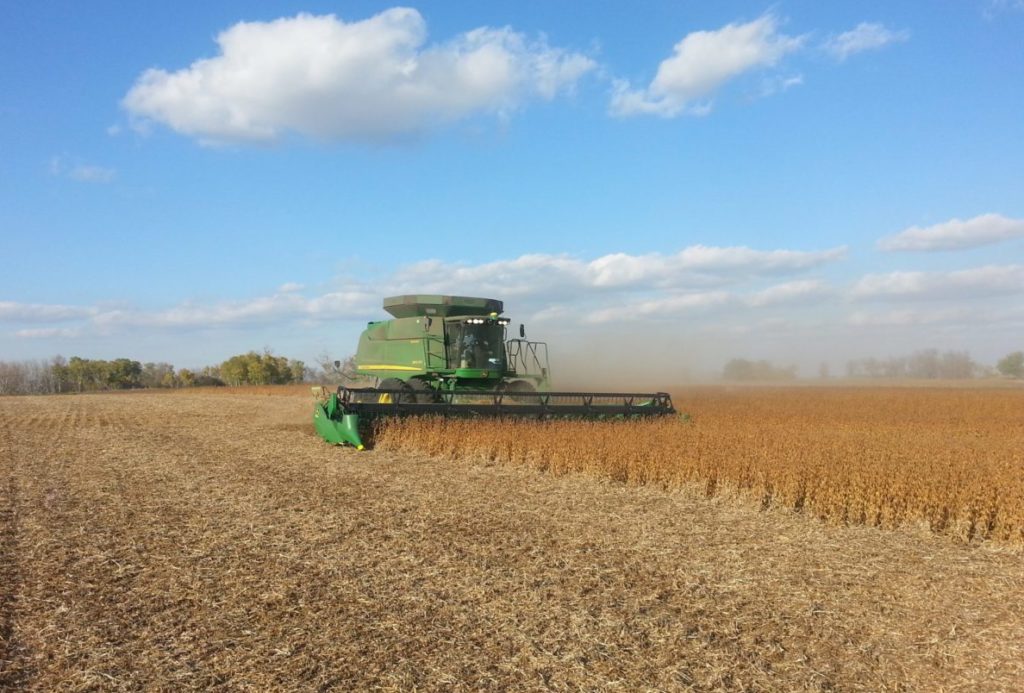

MOHALL—Here in rural North Dakota, agriculture is a big part of our way of life. It is our life. Our state is the nation’s number one producer of many crops.
According to recent reports from the United States Department of Agriculture,“North Dakota led the nation in the production of all dry edible beans, navy beans, pinto beans, canola, flaxseed, honey, dry edible peas, durum wheat, and spring wheat. North Dakota was the No. 2 producer of lentils, black beans, great northern beans, all wheat, and sunflowers. As if that is not impressive enough, North Dakota was in the top five for the production of several other crops as well.”
This Christmas season, hopefully you will be gathering with family and enjoying the company and the conversation. Perhaps some of you will travel to distant places to see relatives that you have not seen in a long time or certain members of your family will be traveling from great distances to spend time here, back home with you and other loved ones who still live close to home.
Odds are, if you are coming together with family this holiday season, you will have some conversations with relatives who live in large urban areas and come from non-farming backgrounds. Maybe some hot topics of discussion will revolve around buzz phrases like climate change, greenhouse gas emissions, renewable energy sources, melting ice caps, GMOs, and who knows what else. If you find yourself backed into a corner from someone who does not understand our way of life and production agriculture in rural America, you should be well equipped to set them straight with facts and examples from out here on the farm.
We all get frustrated with an ever-growing urban/rural divide and the portrayal of the practices we use on our family farms as “big production agriculture” or “factory farming.” We see examples of this spread all throughout the country via big mainstream media news sources. For instance, I recently read an article in Forbes Magazine written by the CEO of an organization of management accountants. Why he can make these outrageous claims about farming is beyond me, but he went on to assert that food production contributes enormously to greenhouse gas emissions. Apparently, he forgot about his grade school science classes and the definition of photosynthesis: the process by which green plants use sunlight to synthesize foods from carbon dioxide to generate oxygen. So better farming practices require the use of herbicides like Roundup to kill weeds, insecticides to protect from plant damage, and use genetically modified organisms (GMO) to get the best yield possible and therefore better equip the plant to generate as much oxygen as possible from carbon dioxide. The more yield, the more CO2 removal.
Recently the Pentagon took the official position that climate is as big of a national security threat as China. Therefore, the federal government is now throwing millions and millions of dollars – if not billions – toward expensive alternative energy sources. The production and maintenance of these sources are terrible for the environment and the government pays no mind to biofuels which are the only source of power that can be below zero on the carbon index scale. Biofuels rarely get coverage or any traction with respect to their use as an environmentally friendly resource. An inexpensive solution would be to use biofuels, like ethanol, to keep the internal combustion engine relevant. Ethanol is produced from corn by dry- or wet-mill processing. An overwhelming majority of ethanol plants are dry mills due to lower capital costs. Dry-milling is a process that grinds corn into flour and ferments it into ethanol. Ethanol is a fully evaluated, safe, healthy, clean, inexpensive, accessible, and domestically produced fuel. Furthermore, internal combustion engines work great, they move vehicles as fast as is needed for short and very long trips, there are plenty of people already trained in maintaining them, the existing refueling infrastructure is extensive, and there are many adjacent industries with millions of employees who support their families because of their jobs.
Another area that farmers here are paying increased attention to every year is the benefits of natural products to aid in growing healthy, high yielding crops. These products are naturally derived from amino acids, growth hormones, organic acids, and biologicals and can be put to work when the crop needs them the most. Most must be combined with specially designed water conditioning agents that address the ill effects of chlorine, acidity, hardness, and other factors that rural and well water sources can have that inhibit the effectiveness of other crop protection products. It is a new and outside-the-box strategy for improving crop performance and building lasting soil health. Is the Forbes management consulting accountant author asking about these practices that our local farmers are embracing? Definitely not. It is things like this that the distant urban population needs to understand about real production agriculture. The world’s food is grown on large acre farms, and the global population cannot be fed by individuals in the suburbs growing vegetables in homemade greenhouses.
I truly hope that you get along well with all your relatives and that there is never a confrontation of any sort at your Christmas dinner table. There are so many things to focus on besides arguing politics during the Christmas season. Unfortunately, everything is so political anymore and so much is blown out of proportion, taken out of context, or just plain misunderstood. However, it is important that we be well equipped to defend our livelihood and tell the truth about farming in North Dakota. So, stand your ground if you must. Your highest yielding, best producing ground. Merry Christmas.